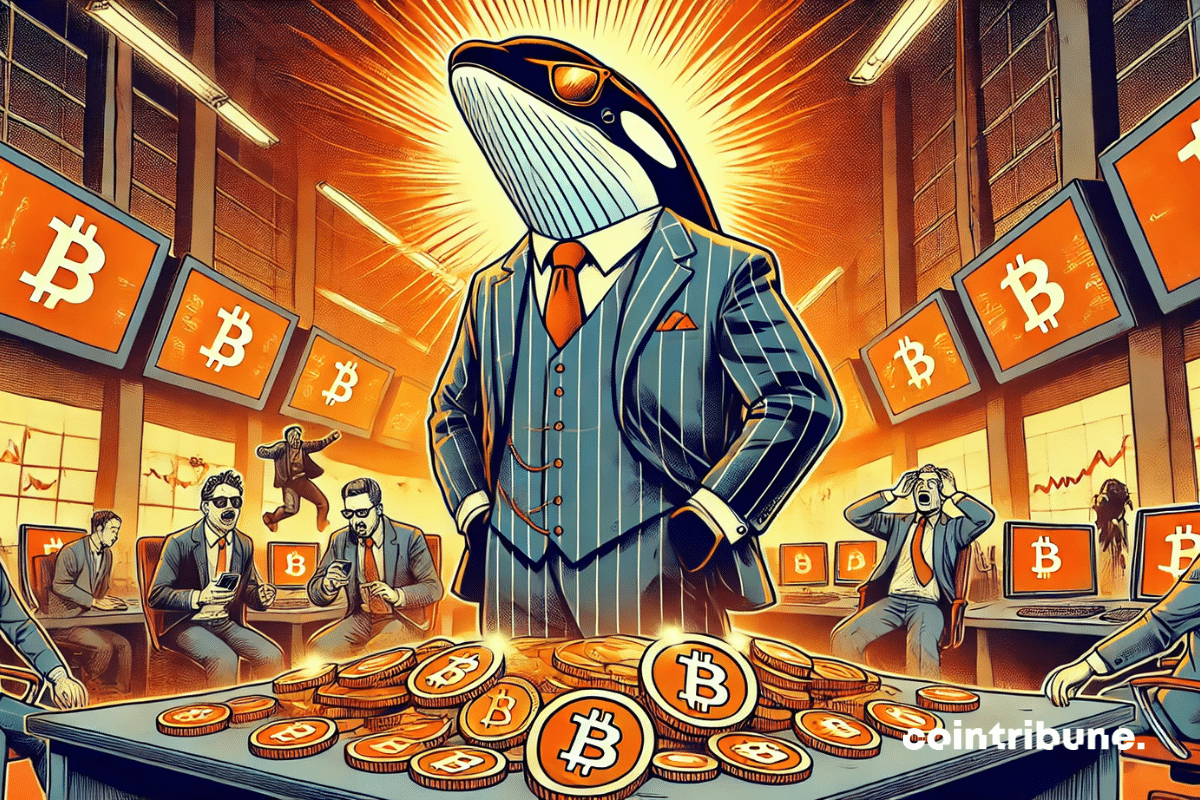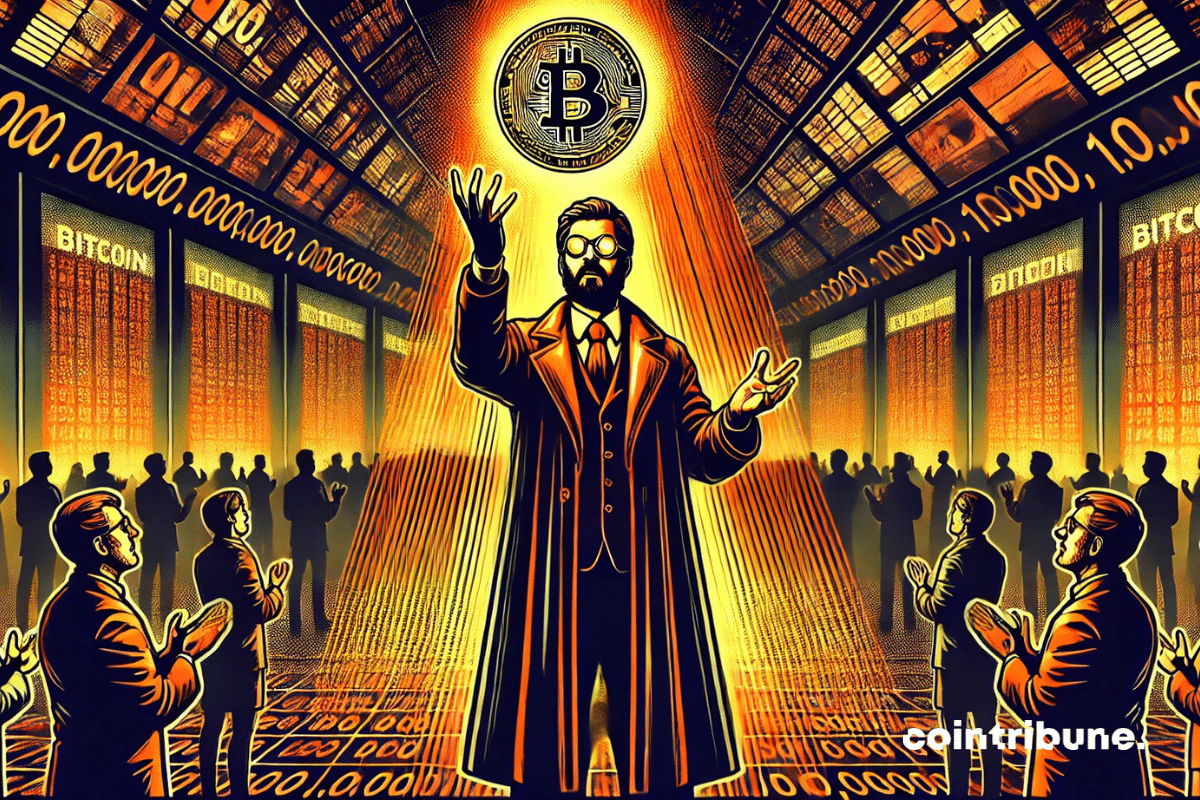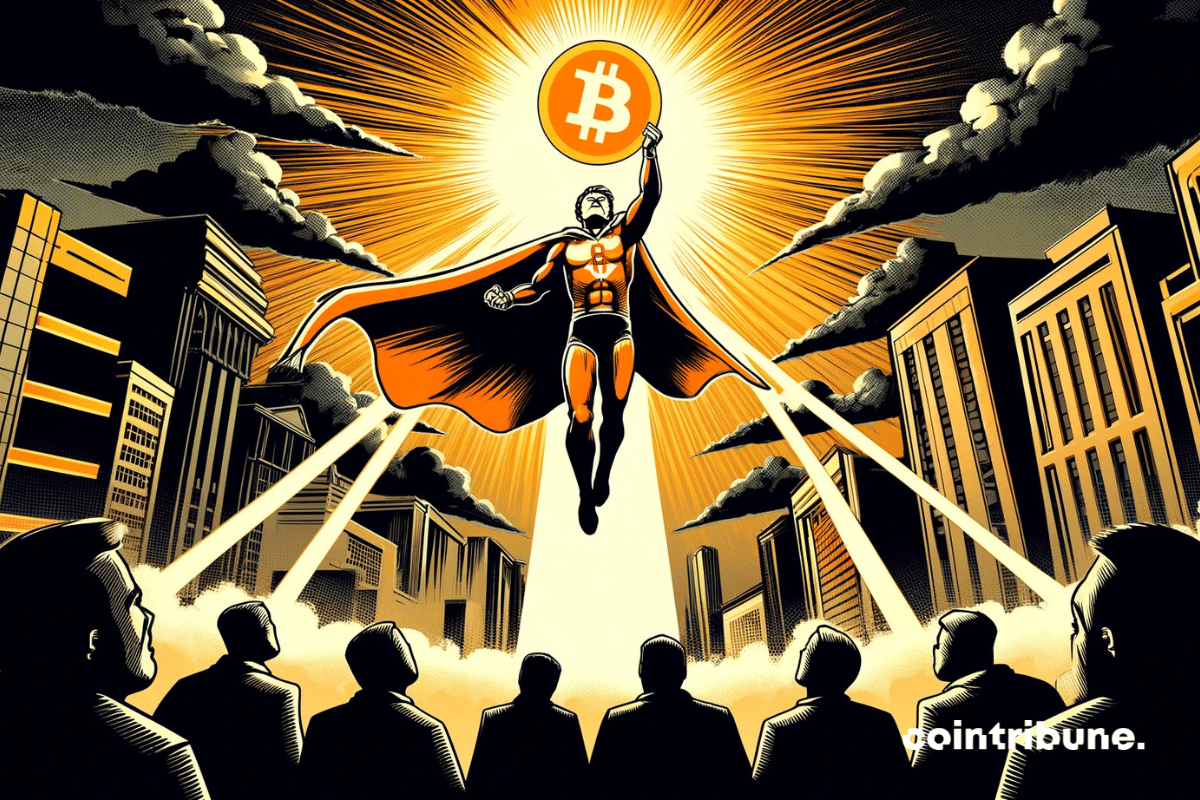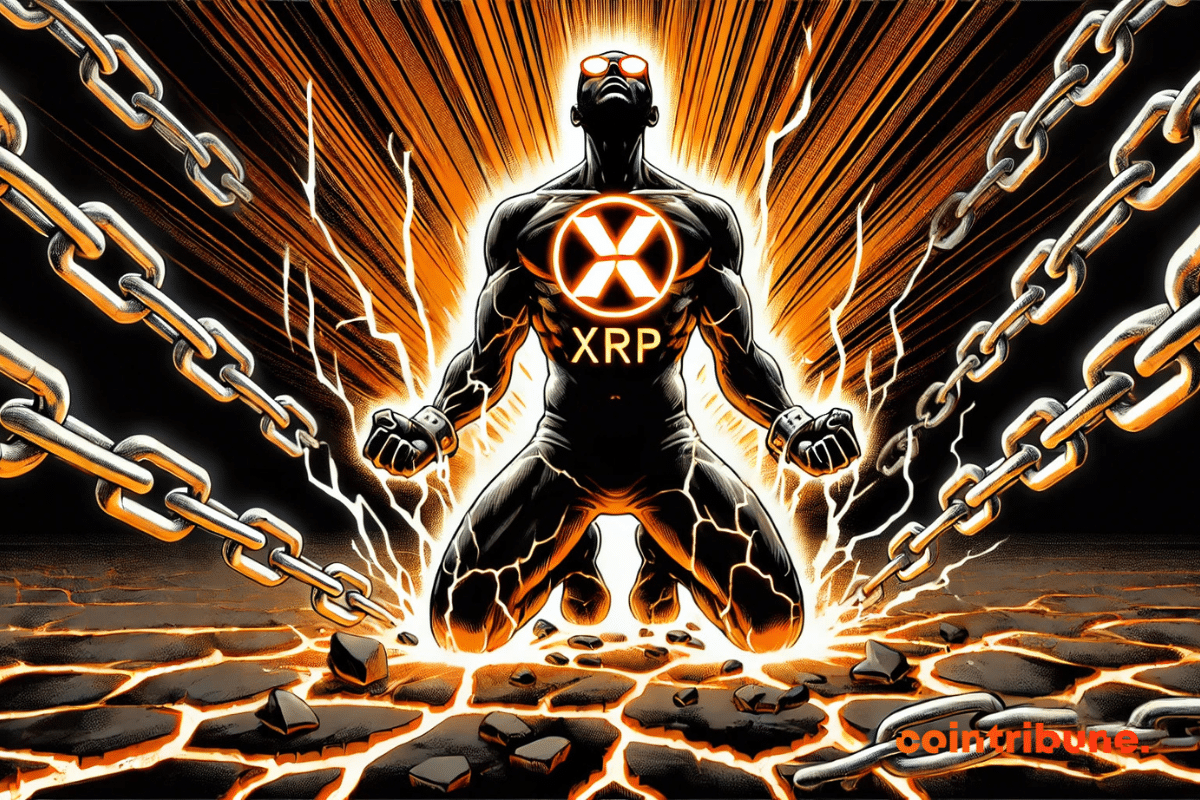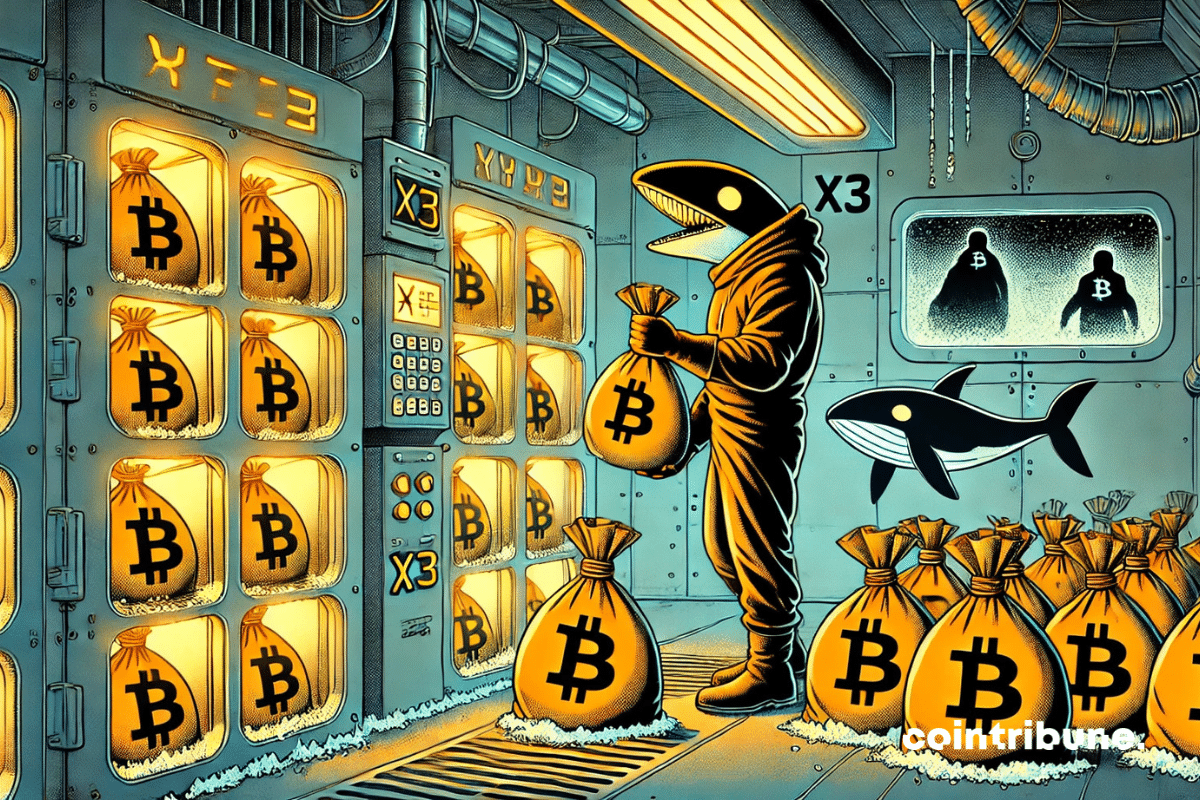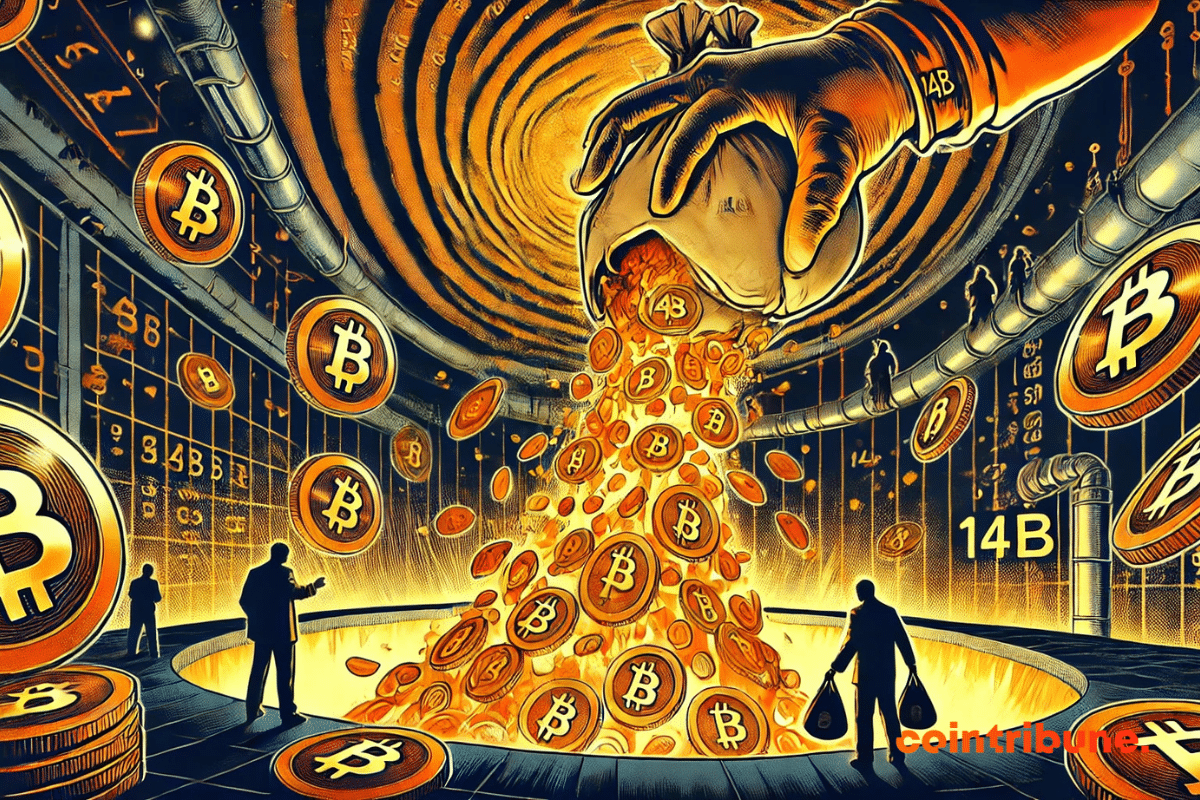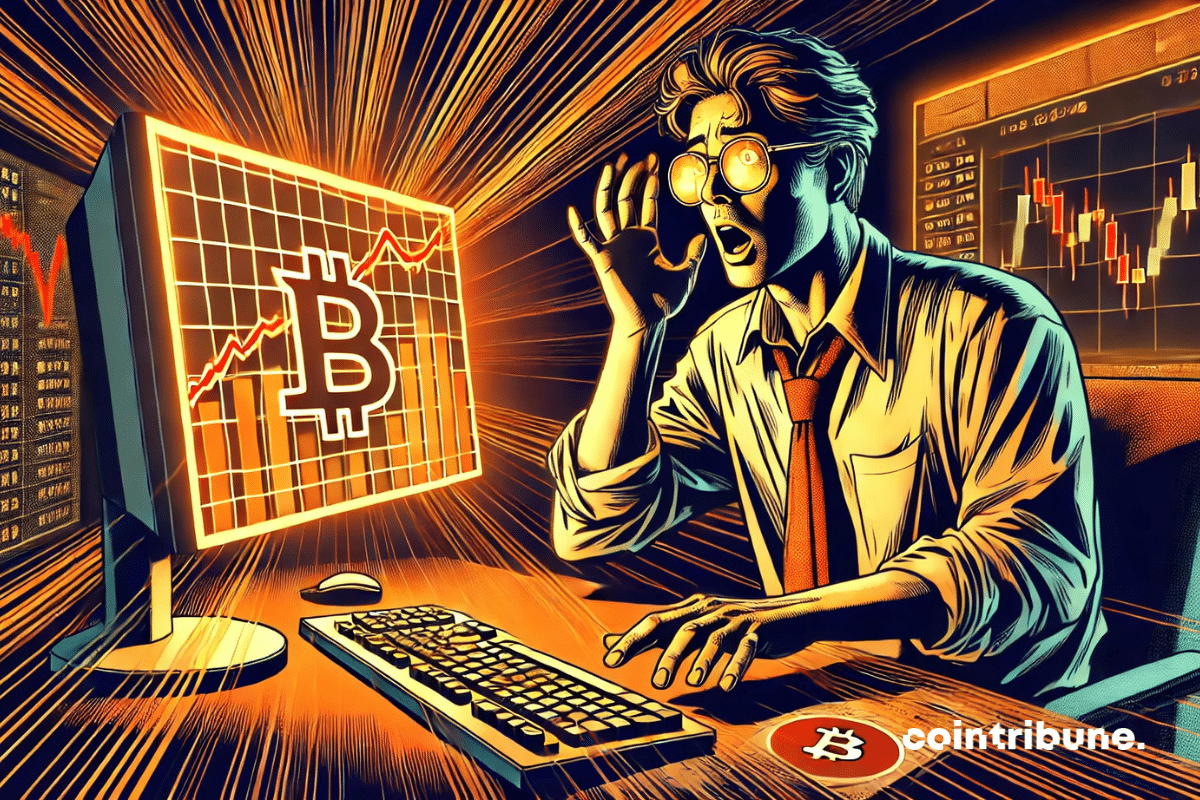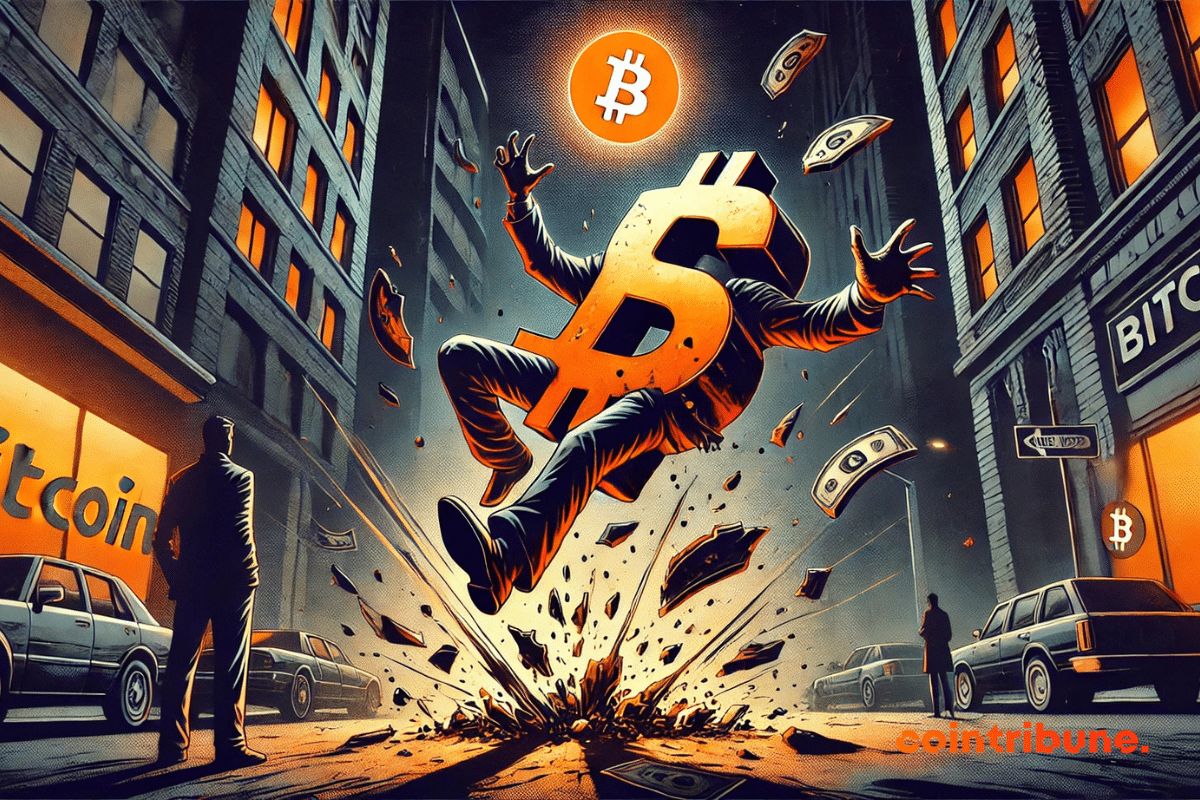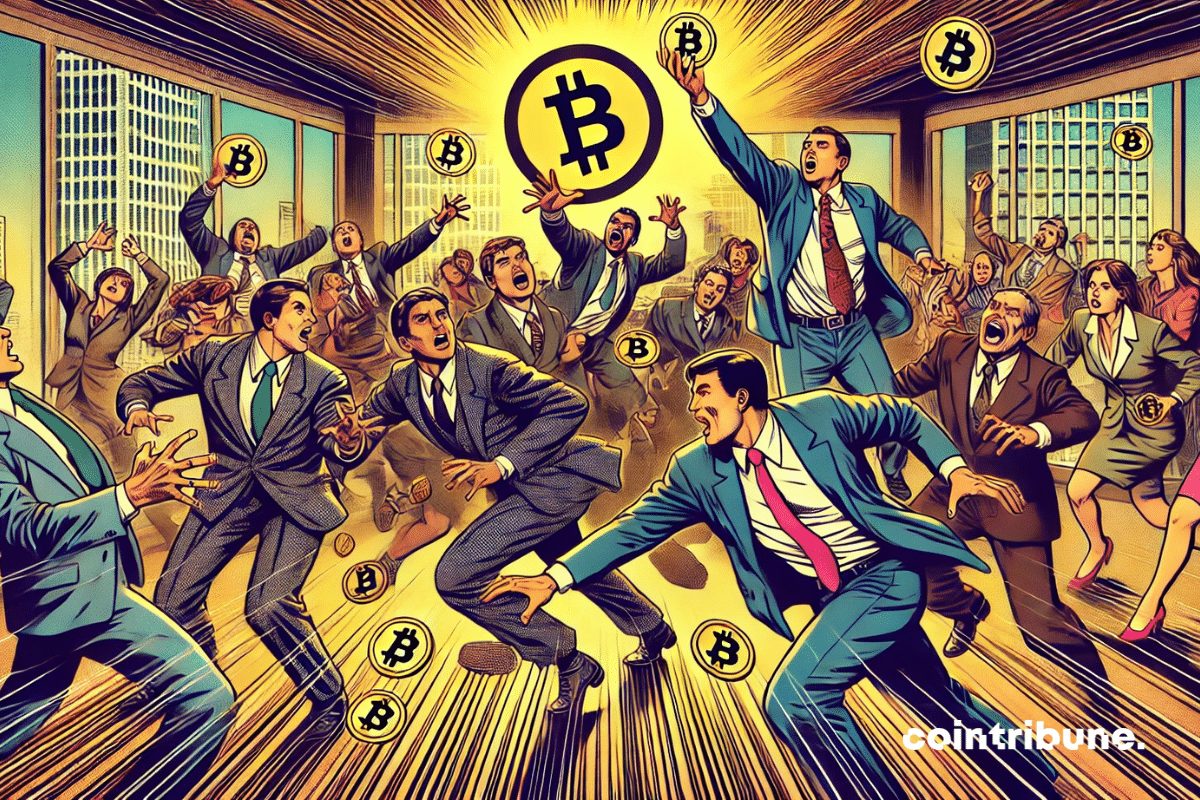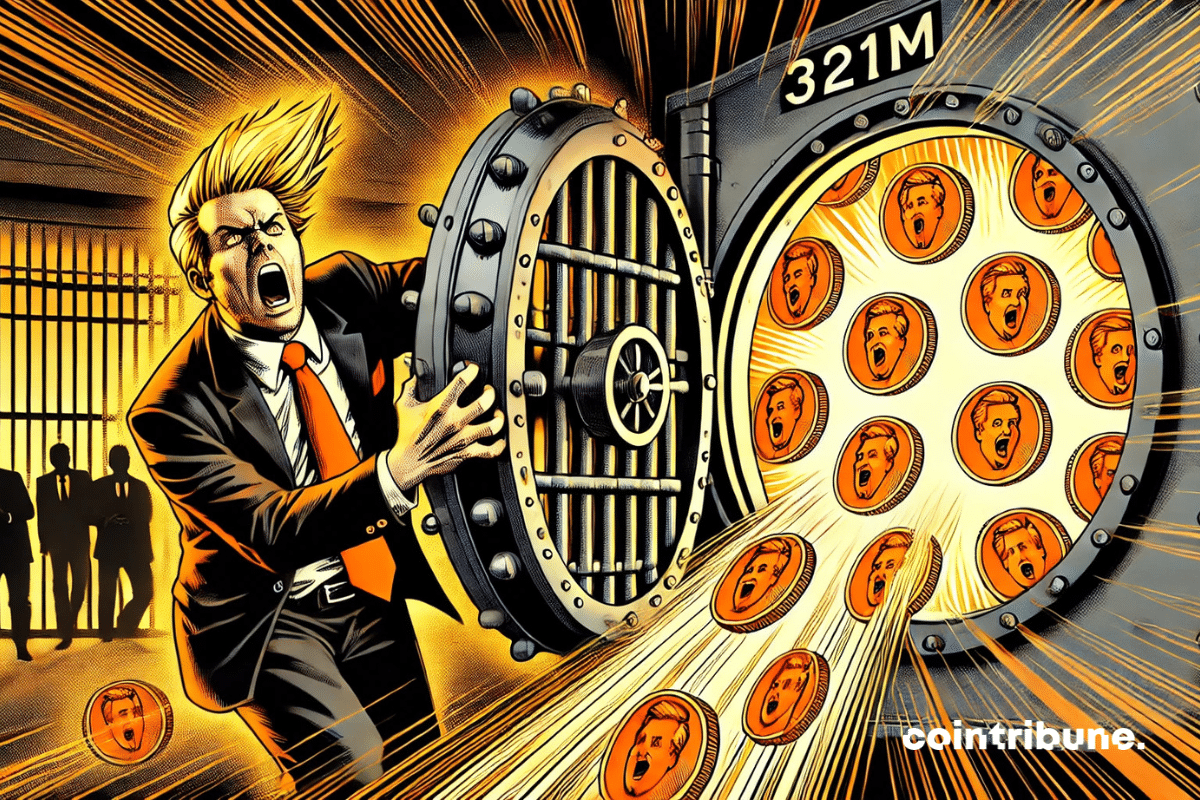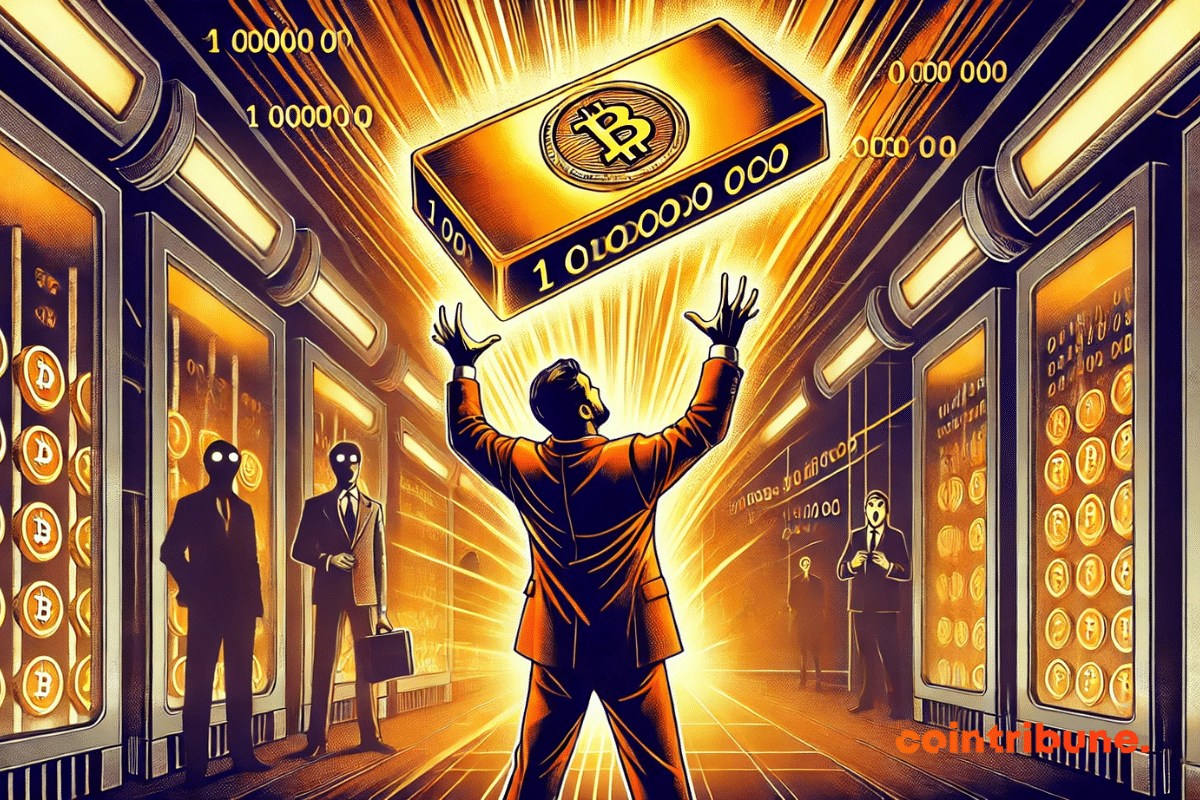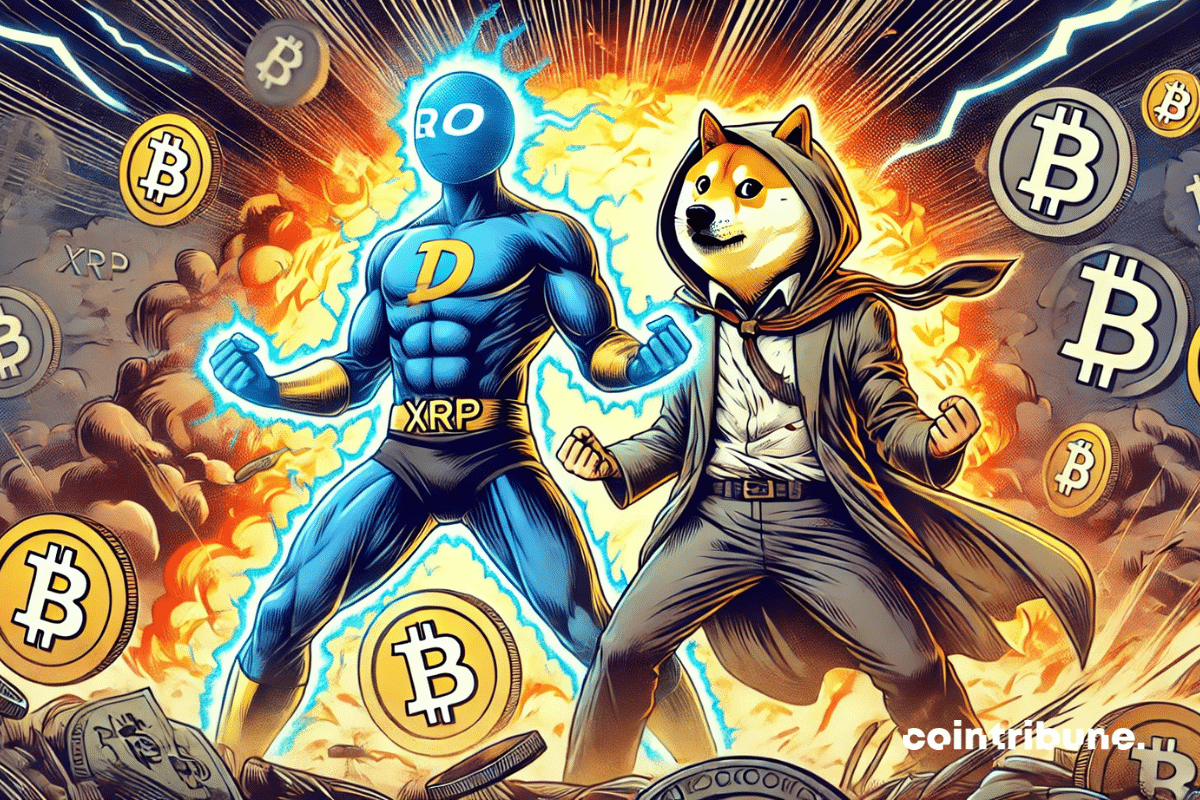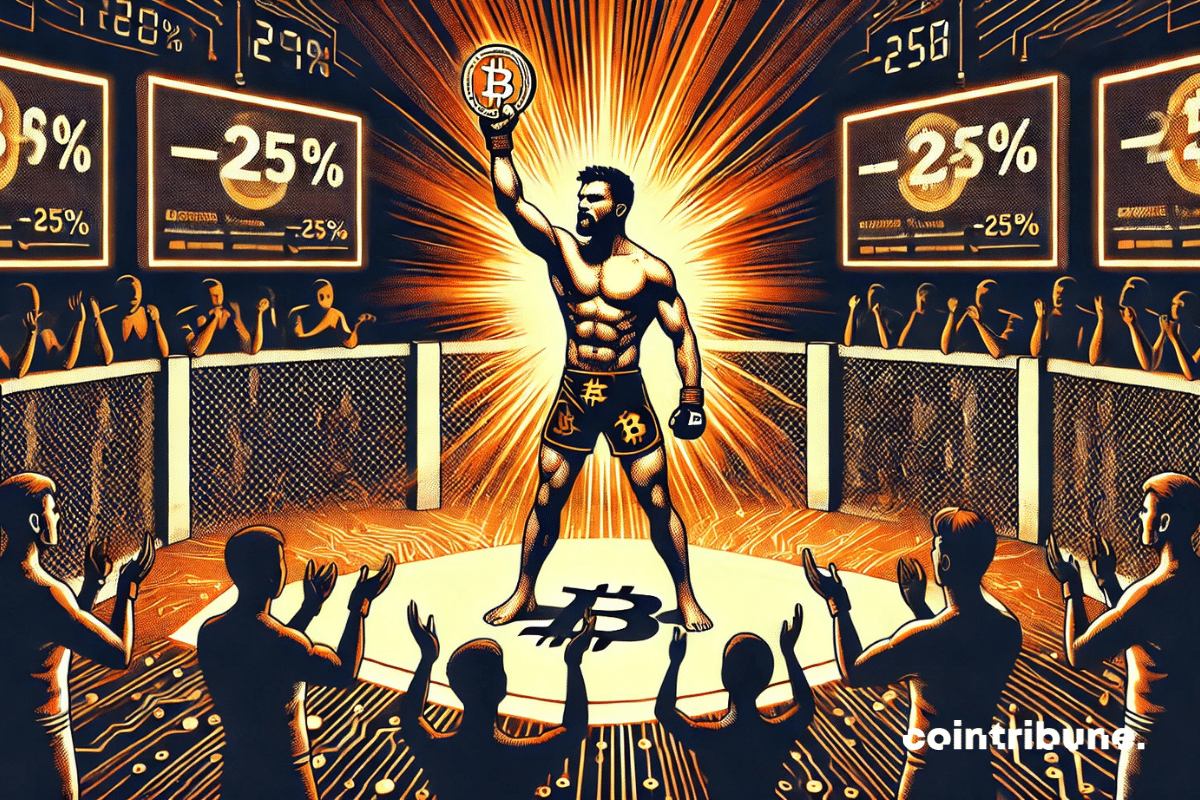Is history repeating itself? In 2025, capital movements on Bitcoin platforms strangely resemble the tremors of 2023. The numbers speak for themselves: net outflows reach unprecedented levels not seen in two years, while exchange reserves plunge toward historical depths. But behind these statistics lies an invisible duel: whales are accumulating, small holders are capitulating. A scenario reminiscent of the early days of a bullish cycle, where strategy and psychology collide.
Bull Run
The history of bitcoin is marked by bold predictions, but Adam Back's, a key figure in the ecosystem, stands out for its blend of technical precision and historical mystery. As the creator of HashCash, mentioned in Satoshi Nakamoto's whitepaper, forecasts a bitcoin at 1 million dollars by 2025, one question looms: is this a cold analysis or a cryptographic legacy speaking through him?
Bitcoin, like a financial phoenix, rises from its ashes with disconcerting vigor. Surpassing $95,000, the queen of crypto shakes up the markets and revives hopes for a historic six-figure peak. Behind this ascent, a complex alchemy unfolds: historical holders, new capital, and psychological balances create a treasure map filled with traps. How to interpret this dance of numbers? Between euphoria and caution, a deep dive into the entrails of a boiling market.
The crypto universe has just experienced a dramatic twist. While Bitcoin hovers around $94,000, Cardano (ADA) is making an unprecedented breakthrough: its trading volume exceeds one billion dollars in 24 hours, propelling its price up by 11%. A performance that raises as many questions as it fascinates. Behind these figures lie technical mechanisms, power struggles between buyers and sellers, and an alchemy unique to decentralized markets. A deep dive into the guts of a rebound that could reshape the balance of cryptocurrencies.
XRP is about to emerge from its slumber. An extreme tightening of the Bollinger Bands alerts analysts: a volatility explosion is coming. The question remains in which direction.
When Robert Kiyosaki speaks, the markets listen. The author of "Rich Dad, Poor Dad," an iconic figure in alternative finance, predicts a bitcoin worth 1 million dollars by 2035. In a global climate weakened by debt, inflation, and mistrust towards institutions, his statement fuels debates about the safe-haven value of cryptocurrencies. Prophetic vision or alarmism? The future of bitcoin may already be written between the lines of this announcement.
The Bank for International Settlements (BIS) has just issued an unprecedented warning: cryptocurrencies and decentralized finance (DeFi) may have crossed a critical threshold, threatening global financial stability. Behind this observation lies a paradox. While the crypto ecosystem prides itself on democratizing finance, according to the BIS, it could amplify inequalities and create unexpected systemic risks. Between massive adoption, shaky regulation, and contagion effects, here is an analysis of a warning that is shaking the markets.
While markets struggle to regain their momentum, a silent accumulation of bitcoin by the largest holders, the famous "whales," is reshuffling the cards. By absorbing much more than the newly issued supply, these players are changing the market balance. This discreet but massive movement reignites speculation: is it the beginning of a new bullish rally, or just a strategic repositioning out of sight?
As uncertainty grips global markets, a strong signal emerges from the Bitcoin network: more than 170,000 BTC, nearly 14 billion dollars, have left dormant wallets. Such a rare and massive movement reactivates the specter of high volatility. In response to this on-chain shock, investor strategies are fragmenting between distrust and accumulation.
Like a seismograph recording the first tremors, CryptoQuant sounds the alarm: Bitcoin is preparing for a major shakeup. According to the platform, 170,000 BTC, held for three to six months, have started to move on the chain. A historic signal, often a precursor to market storms. Between fleeting panic and anchoring strategies, the market is fracturing. An analysis of an alert that could redefine the coming weeks.
The numbers speak for themselves: in one week, Coinbase International's Bitcoin perpetual contracts surpassed the $100 billion volume mark. A record that shakes the markets and raises burning questions. Why this frenzy? Is it simply an effect of volatility or a sign of a paradigm shift? Between price turbulence, flight to safe havens, and regulatory games, an analysis of a phenomenon that is redefining the rules.
In 2025, the crypto universe looks like a movie scene where the same actors return, despite expectations of a new script. According to CoinGecko, AI tokens and memecoins still capture 62.8% of investors' attention in the first quarter. This dominance raises questions: is the market destined to recycle its old successes, or does this persistence hide a subtle transformation?
As the dollar falters under the blows of trade tensions and macroeconomic doubts, Bitcoin emerges as a bold alternative. Between hopes for a rebound and strategic uncertainties, the cryptocurrency whispers a promise: to rewrite the rules of safe-haven value. What if 2024 marked the advent of a new financial paradigm?
Bitcoin, often compared to a digital gold rush, is taking a decisive step. Imagine: 79 companies now hold nearly 700,000 BTC, equivalent to a treasure estimated at 57 billion dollars. These figures reflect not just an accumulation of assets, but a profound shift in investment strategies. Far from fleeting speculation, Bitcoin is establishing itself as a key piece in the reserves of economic giants. A silent but explosive revolution.
Born from a meme, Dogecoin has established itself as a paradox of cryptocurrencies: both a joke and a serious asset. This Saturday, the price of DOGE surprised with a 6% rebound, reaching $0.166. Behind this surge, a rare technical signal on the hourly chart rekindles speculation. But amid contradictory indicators and recent news, the trajectory of the crypto dog remains enigmatic.
The crypto universe is moving at lightning speed, and BNB Chain seems determined not to be left behind. As blockchains fiercely compete to gain speed and efficiency, the Binance-affiliated platform is preparing a series of technical updates that could redefine industry standards. In April, the main network is set to experience a turning point, following the success of the Lorentz test network. But behind these technical adjustments lies a more ambitious strategy: to dominate the game in 2024.
In the unpredictable arena of cryptocurrencies, unexpected twists often defy logic. The upcoming release of 321 million dollars in Trump tokens, scheduled for April 18, is proof of this. While the official memecoin of the American president has lost 89% of its value since January, this massive unlocking raises a crucial question: how can a plummeting asset still threaten the market?
As geopolitical tensions and economic turbulence create a chaotic financial landscape, tokenized gold emerges like a beacon in the storm. For the first time since the 2023 banking crisis, its trading volume surpasses the symbolic one billion dollar mark. This achievement combines technological audacity with an ancestral instinct for value preservation. However, behind this figure lie complex dynamics where political decisions, market fears, and blockchain innovation intertwine.
As Bitcoin hovers around $82,000, a burning question on investors' lips is: has the king of cryptos finally found its floor? John Bollinger, a legend of technical analysis and creator of the eponymous Bands, brings a glimmer of hope. According to him, technical signals suggest a rebound scenario. But caution: behind this enticing prospect lie traps to decipher.
The financial landscape is in turmoil. While Bitcoin, often criticized for its legendary volatility, goes through a phase of relative stability, the S&P 500 is surging like a speculative asset. Ironically, Wall Street's flagship index, a symbol of traditional finance, is now rivaling the unpredictability of memecoins. A role reversal that questions certainties and redraws the boundaries between risk and security.
As the crypto market wobbles under macroeconomic turmoil, Ethereum plunges into an unprecedented zone since March 2020. A historic signal awakens, but do investors still dare to believe in it?
The trade war orchestrated by Donald Trump has reached an unprecedented level, with record tariffs of 104% imposed on Chinese products. This sudden, almost surreal escalation has caught the crypto markets off guard, immediately plunging bitcoin into a downward spiral. But is this decline sustainable or merely a masked opportunity?
The crypto landscape, shaken by adverse winds in recent weeks, is finally showing signs of resilience. As Bitcoin grazed $75,000 before bouncing back toward $80,000, altcoins like XRP and Dogecoin recorded gains of 10%, giving the market a breath of fresh air. This upswing comes as overall market capitalization returns to November levels, a time marked by Donald Trump's election. A technical rebound, massive liquidations, and a ripple effect among traders: decoding a relief that is as brutal as it is unexpected.
As clouds gathered over the crypto landscape, a lightning bolt split the sky: Ethereum, an indispensable pillar, lost 14% of its value in 24 hours. A brutal drop, amplified by the liquidation of an Ethereum whale for $106 million on Sky, the DeFi platform rebranded in August. Behind these numbers lie cold mechanisms, ruthless mathematical ratios, and a chain reaction cruelly reminiscent of the fragility of decentralized ecosystems. What if this debacle reflected a market still too sensitive to geopolitical shocks, such as Donald Trump's recent customs announcements? A deep dive into the guts of algorithmic carnage.
The crypto universe is anything but routine. This time, it's Conor McGregor, MMA icon and seasoned entrepreneur, shaking up the market with his memecoin "Real." Launched via a sealed auction—a first to avoid manipulation—this project combines crypto audacity with a formidable marketing strategy. Between revolutionary promises and analyst skepticism, "Real" raises a burning question: what if McGregor manages to change the game... for a fourth time?
Cryptocurrency is no longer a marginal experience. It is now embedded in the daily lives of millions of Americans, reshaping the contours of their financial autonomy. A recent study by the National Cryptocurrency Association reveals that 55 million adults hold digital assets. Among them, 76% believe that this technology has improved their quality of life. Far from clichés about speculation, these figures unveil a more nuanced reality: massive, pragmatic adoption, and a source of concrete hopes.
Finance is undergoing a silent yet brutal metamorphosis. Bitcoin, born from the shadows of the 2008 crisis, today embodies a revolution that shakes the foundations of banks. Between promises of emancipation and technical challenges, its rise raises the question: can it really dethrone the giants of traditional finance? Far from clichés, let us dive into an unflinching analysis.
Bitcoin is going through an unprecedented calm phase. Weekly trading volumes have just reached their lowest level in two years, a signal that draws attention. Are we facing prolonged stagnation or a pause before a new bullish momentum? For savvy investors, this slowdown could hide a strategic opportunity. Analysis!
Bitcoin ruthlessly crushes the hopes of Ether. The ETH/BTC ratio has just hit its lowest level in five years, at 0.02193. A staggering drop of 39% in one year. For the first time since a halving, Ether is bending under the weight of its elder. What is behind this historic reversal? Between being a safe haven in the face of macroeconomic turbulence and the repositioning of investors, Bitcoin consolidates its status as a safe-haven asset. A deep dive into the mechanics of an unequal duel.
As Bitcoin hovers around $82,500, a breeze of optimism blows through the cryptosphere. Raoul Pal, a former Goldman Sachs executive and a key figure in macrofinance, throws a stone into the pond: according to him, Bitcoin is about to exit its correction phase and embark on a new ascent. His prediction? An explosion in prices, fueled by a little-known indicator to the general public: global liquidity. But behind these forecasts lie subtle mechanisms, where time, economic data, and market psychology intertwine.
